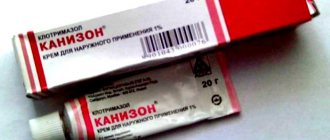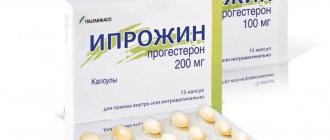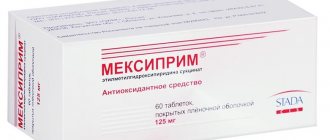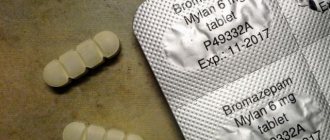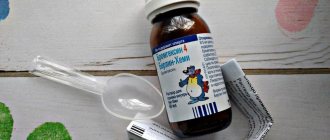Ophthalmoferon – eye drops based on recombinant alpha-2b interferon – is an antibacterial and antiviral combined agent used in ophthalmic practice. The drug contains recombinant interferon alpha-2 and has a pronounced antimicrobial, immunomodulatory, regenerative, local anesthetic and antiviral effect.
Active ingredients in 1 ml of medicinal solution:
- Human recombinant interferon alpha-2 not less than 10,000 IU;
- Diphenhydramine (diphenhydramine) 001 g.
Human recombinant interferon alpha-2b has a wide spectrum of antiviral activity, antiproliferative, immunomodulatory effects. This protein allows you to block the process of reproduction of the virus that has entered the eye, which neutralizes its ability to spread and infect more and more cells.
Oftalmoferon drops photo
In addition, interferon alpha inhibits viral replication. It affects cells due to the ability to bind to specific receptors on membranes.
Diphenhydramine is a histamine H1 receptor blocker. Diphenhydramine reduces swelling, has an antiallergic effect, and itching of the conjunctiva. In addition, diphenhydramine will allow you to achieve a local anesthetic effect, which significantly alleviates the patient’s discomfort during illness.
According to reviews from patients who used Oftalmoferon, within a few minutes the burning sensation and redness of the mucous membranes disappeared in the eyes. The medicine is not addictive and has no withdrawal syndrome after cessation of therapy.
The drug acts locally and the active substances are practically not absorbed into the systemic circulation even with long-term therapy.
Compound
1 ml of Oftalmoferon eye drops contains 10,000 IU of human recombinant interferon alpha-2b , as well as an additional active compound – 1 mg of diphenhydramine hydrochloride ( diphenhydramine ).
Auxiliary are: 3.1 mg of boric acid, 0.4 mg of disodium edetate, 2.2 mg of sodium chloride, 7 mg of sodium acetate, 3 mg of hypromellose, 5 mg of povidone 8000, 50 mg of macrogol 4000 and approximately 1 ml of purified water.
Is it possible to drop Oftalmoferon into the nose: how and when to use the drug?
A runny nose awaits us at every turn, especially during seasonal cold spells, when pathogenic bacteria and viruses are activated. In the treatment of acute rhinitis, various drugs are used; you can even drip drugs to eliminate eye infections. Albucid drops are often prescribed for a runny nose. But Oftalmoferon with a pronounced antiviral effect is also purchased for instillation into the nose.
Description of the drug
The main substance of Oftalmoferon eye drops is a recombinant interferon of a protein nature, active against viruses. A type of interferon alpha 2b is used to treat serious viral diseases.
The substance, entering the patient’s body, prevents the proliferation of viruses at the cellular level. Thanks to interferon, cells activate the synthesis of enzymes that suppress the spread of infection.
The interferon treatment system plays an important role in protecting against viruses.
Oftalmoferon drops also contain thousandths of grams:
- diphenhydramine with local anesthetic effect;
- boric acid as a protectant against bacteria;
- Trilon stabilizer;
- polyvinylpyrrolidone - a thickener for medicinal solutions;
- hypromellose for the formation of complex compounds, moisturizing the mucous membrane.
Oftalmoferon eye drops are prepared in an isotonic sodium chloride solution. In addition, this substance relieves swelling of the mucous membrane.
The drug is intended for instillation into the eyes. It is a topical remedy, eliminating the symptoms of inflammation.
The nature of the runny nose
Rhinitis is based on inflammation of the nasal mucosa. Swelling is caused by infectious agents: viruses, bacteria, fungi. The cause of allergic rhinitis is the entry into the nasopharynx of substances that provoke the development of swelling of the mucous membrane and copious secretion of mucus.
Causes of nasal congestion include:
- injuries;
- congenital curvature of the nasal septum;
- adenoids with their growth;
- reactions to medications;
- polyps;
- disturbances in the regulation of vascular tone.
A runny nose is a sign not only of colds, but also of autoimmune diseases - psoriasis, rheumatoid arthritis.
Treatment for rhinitis is selected depending on the cause of the disease. Since a runny nose of an infectious nature is more common, antiviral drugs are selected.
When and how to use the drug for a runny nose?
The viral nature of rhinitis is suppressed with Oftalmoferon. The components of the solution will not only moisturize the nasal mucosa, but also protect the cavities from the penetration of bacteria. It is worth using eye drops when the color of nasal discharge changes.
The combined agent has a detrimental effect on viruses that cause inflammation and swelling of the nasal mucosa. A special feature of the drug is its ability to moisturize the nasal epithelium. It also has an antiallergic effect, which is important for rhinitis caused by a reaction to pollen.
Use the drug three times a day, instilling two drops into each nostril.
If you start instilling Oftalmoferon, it is important to maintain the humidity level in the room. The air temperature in the house is maintained at 20–23 degrees Celsius.
The drug is contraindicated in case of individual intolerance to the components of the drug.
Women use drops with caution during pregnancy and lactation.
Pharmacodynamics and pharmacokinetics
Ophthalmoferon is a combined drug containing an antiviral immunomodulatory antiproliferative substance - human recombinant interferon α-2b , which is supplemented with an active antihistamine - diphenhydramine .
Diphenhydramine acts by blocking H1-histamine receptors, which has an antiallergic effect, reducing swelling and itching in the human conjunctiva.
Pharmacokinetic properties
If you follow the instructions and apply eye drops topically, then systemic absorption does not occur - the concentration of the active substances of the drug in the blood is achieved significantly less than the standard detection limit (for example, for interferon α-2b - approximately 1-2 IU in 1 ml), which does not allows you to identify clinically significant reactions.
Viral conjunctivitis
The viral type develops, as a rule, in diseases of the upper respiratory tract. It is dangerous because it is transmitted everywhere by any means - through physical contact, common items (hygiene products, dishes), and by airborne droplets. A child can become infected even while walking with his mother, in a store or clinic. If viral conjunctivitis appears in a baby, you need to treat it at home, carefully observing the rules of hygiene. There are also a number of drugs for this.
"Ophthalmoferon"
Eye drops contain recombinant interferon 2-alpha and diphenhydramine - thus providing a targeted antiviral and antihistamine effect simultaneously. They suppress bacterial activity and eliminate inflammation, itching, and redness of the eyes. An adverse reaction may be a burning sensation after instillation.
"Zovirax"
The active component of this ointment is acyclovir. Zovirax is a powerful antiviral agent that inhibits the synthesis of viral DNA without damaging cellular material. The medicine is used for three days, after which the results are usually noticeable.
When using antibiotics, improvement in eye condition should occur within three days after starting use - this applies to children and adults. If there is no visible result, then you should visit a doctor - he will prescribe another medicine.
With long-term use of antibiotics, there is a danger of developing superinfection - the growth of other types of microorganisms that are resistant to the drug, including fungi.
Indications for use
- conjunctivitis of various types, including adenoviral , hemorrhagic ( enteroviral ), herpetic ;
- keratitis - adenoviral , herpetic (card-shaped, vesicular, dotted or tree-like);
- herpetic keratitis with stroma, which may be accompanied by corneal ulceration;
- or herpetic keratoconjunctivitis ;
- herpetic uveitis or keratouveitis (ulceration is possible);
- with dry keratoconjunctivitis (dry eye syndrome);
- prophylactic for graft disease , to prevent relapses of herpetic keratitis after keratoplasty ;
- prevention or treatment of complications after excimer laser refractive surgery on the cornea.
Oftalmoferon eye drops, instructions for use (Method and dosage)
The drug is used conjunctivally until symptoms disappear completely for various eye lesions or for prevention.
For viral diseases
Adults and children in the acute stage are prescribed 1-2 drops to be instilled approximately 6-8 times during the day. When positive dynamics appear and the inflammatory process is stopped, instillation can be reduced to 2-3 times.
For keratoconjunctivitis sicca (dry eye syndrome)
Recommended daily use - 1-2 drops twice a day for 25-30 days.
Instructions for the use of Oftalmoferon for preventive purposes
- Complications after excimer laser refractive surgery on the cornea of the eye: drops should be used daily from the first day of surgery according to the scheme: 1-2 drops. 2 times a day, course – at least 10 days.
- Graft disease or prevention of recurrence of herpetic keratitis that occurs after keratoplasty: the drug should be used daily according to the regimen: 1-2 drops. into the operated eye 3-4 times a day, the course is at least 14 days, starting from the first day after surgery.
Attention! When using contact lenses , drops can be used only after removing the lenses; they can be put on only 15–20 minutes after the instillation procedure.
Is it possible to drip Oftalmoferon into the nose?
Oftalmoferon is a combined antiviral drug. Used in ophthalmological practice. When used it is characterized by the action:
- Antiviral.
- Anti-inflammatory.
- Anesthetic.
- Immunomodulatory.
- Activates regenerative processes.
Oftalmoferon is a medicine that has a fairly wide spectrum of therapeutic action.
Compound
The drug is an aqueous solution, the main active ingredients of which are:
- Human leukocyte interferon. It is an immunomodulator and has a pronounced antiviral effect. Capable of changing the metabolic processes of bacteria, preventing their reproduction, leading to death.
- Diphenhydramine is an antihistamine. It has an antiallergic effect and has a weak local anesthetic effect.
- Boric acid is an antiseptic. Prevents the appearance of secondary bacterial infection when the drug is instilled into the conjunctival sac.
- Excipients, among which some components have moisturizing properties, like artificial tears, while others help to lengthen the period of action of the drug.
All components of the drug act exclusively locally, without penetrating deep into the tissues, and do not have a systemic effect.
Indications
The main purpose of Oftalmoferon is its use for diseases of a viral, sometimes bacterial nature. Indications for use are:
- Almost all types of conjunctivitis caused by herpes viruses, adenovirus, including those accompanied by hemorrhagic changes.
- All types of viral lesions of the cornea of the eye, herpetic, adenoviral in nature, with or without the presence of ulcerations.
- For combined lesions of the conjunctiva and cornea.
- Uveitis of viral etiology.
- “Dry eye” syndrome, when drops can be used as a moisturizer.
- As a prophylactic against secondary infectious eye lesions after surgical interventions, including operations using laser equipment.
- After plastic surgery on the eyes or using transplants to reduce the risk of rejection.
The official instructions for use of the drug do not contain information about whether Oftalmoferon can be dripped into the nose for rhinitis of viral etiology.
Features of eye drops
Any eye drops are a special form of release of the active drug substance. The surface of the mucous membrane of the eyes is the most sensitive compared to other mucous membranes. The eyes are susceptible to the slightest changes in osmotic pressure, environmental acidity, and mechanical stimuli.
In the process of manufacturing solutions for instillation, the basic physical and chemical characteristics of the natural barriers of the eyes are certainly taken into account: tear fluid, structural features of the epithelial cover of the cornea.
Quite stringent requirements are imposed on eye drops. They must be identical to tear fluid in terms of basic physical characteristics:
- Be isotonic, correspond to pH level = 7.4.
- Do not exceed the maximum permissible concentrations of active and auxiliary substances.
- Be sterile.
- The composition must be stable.
- Comply with the requirements for the maximum permissible concentration of the active substance.
- Should not have microscopic mechanical inclusions that can have an irritating effect.
If we compare eye drops with other liquid dosage forms, then eye preparations have a much lower concentration of the active substance. This is due to the peculiarities of the structure of the mucous membrane of the eyes, the high sensitivity of the latter when exposed to any irritants.
Eye drops for a runny nose
A runny nose is a common companion to respiratory illnesses caused by viruses or bacteria. It manifests itself as an abundant flow of mucous secretion from the nasal passages of a serous or purulent nature; the intensity of the manifestations of rhinitis depends on the cause of the disease. Periods of abundant secretion of pathological substrate are replaced by swelling and a feeling of congestion in the nasal passages.
More often than others, sodium sulfacyl eye drops, or Albucid, are used in the nose for a runny nose, especially in pediatric practice for the treatment of colds in infants.
It is not recommended to use Oftalmoferon for rhinitis for the following reasons:
- For immunomodulatory, antiviral purposes, there is an independent drug for instillation into the nasal cavity: human leukocyte Interferon.
- Diphenhydramine, which is part of Oftalmoferon, when swallowed, can have a systemic effect on the body.
- Boric acid and excipients in the drug can cause an irritation reaction in the mucous membrane of the nasal passages.
- The concentrations of active substances in eye drops are much lower than those necessary to obtain a therapeutic effect in the treatment of viral and infectious rhinitis.
Instillation of Oftalmoferon into the nose has no therapeutic meaning.
The modern list of pharmacological drugs is quite wide. There are no indications for the justified use of Oftalmoferon in the treatment of the common cold. Remember: treatment must be prescribed by a doctor. Using medicines contrary to the official instructions for use can be dangerous.
Source: https://elaxsir.ru/lekarstva/dlya-nosa/mozhno-li-kapat-v-nos-oftalmoferon.html
Newborns
Since Ophthalmoferon contains interferon and has an immunomodulatory and antiviral effect, it is more preferable for newborns. In addition, it has an antipruritic effect and restores damaged eye tissue, stopping the inflammatory process.
The drug is not contraindicated for newborns, however, before use, the mother should consult an ophthalmologist who, depending on the child’s age and the course of the disease, will determine the dosage and treatment regimen individually.
Side effects and contraindications Oftalmoferon
Oftalmoferon is well tolerated by eye tissues. According to reviews from specialists and patients who have undergone treatment with the drug, the drug does not cause side effects. There were no patient complaints about the irritating effect of the drug.
Overdose
When applied topically, it is not observed.
Contraindications
Contraindications to the use of the drug Oftalmoferon are only individual intolerance to some of its components. No side effects were identified with adequate use of the drug.
The question of the possibility of treatment with drops for pregnant women and patients breastfeeding should be decided individually with a doctor.
Oftalmoferon's analogues
Level 4 ATC code matches:
Florenal
Oksolin
Oxolinic ointment
Zirgan
Oftan I'm coming
Poludan
There are known analogues of eye drops that also have antiviral or immunostimulating effects:
- Aktipol
- Poludan
- Oftan-Idu
Reviews about Oftalmoferon
Today, Oftalmoferon eye drops are quite popular and in demand, reviews and discussions of which can be found on various Internet resources and forums. Most often, the comments are positive, because they can be used both in children and in elderly patients suffering from eye problems - various etiologies of conjunctivitis, “dry eye”, as well as for prevention purposes.
Mothers praise Oftalmoferon, noting its safety of use, availability, lack of itching and allergies.
Oftalmoferon price, where to buy
Many patients like the easy-to-use and affordable Oftalmoferon eye drops, the price of which does not exceed 350 rubles. for 10 ml. The price of eye drops of a smaller volume - 5 ml is usually up to 200 rubles.
- Online pharmacies in RussiaRussia
- Online pharmacies in KazakhstanKazakhstan
Pharmacy Dialogue
- Ophthalmoferon (vial 10 ml eye/drop) Firn M
RUB 319 order
show more
Storage rules in pharmacies and clinics
According to SP 3.3.2.028-95 Ophthalmofen is stored in special refrigeration chambers at a humidity of no more than 75% and a temperature of +2..+8oC. The drug should be located next to drugs of the same series.
Expired goods in large quantities, according to SanPinN 2.1.7.2790-10, are destroyed at pharmaceutical factories. A small amount is destroyed in the pharmacy. Oftalmoferon is diluted with water and poured out.
Based on SP 3.3.2.028-95, Oftalmoferon drops must be transported in closed containers made of plastic or metal. According to Federal Law N61 “On the Circulation of Medicines” dated April 12, 2010, carriers must have an agreement and a license.
Pharmacy and clinic employees are responsible for the safety and quality of medications. In case of damage, it is necessary to draw up a disposal report and destroy the damaged goods.
